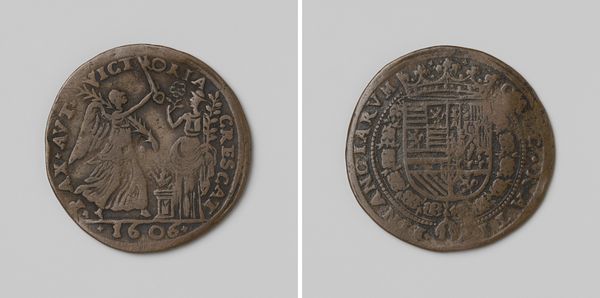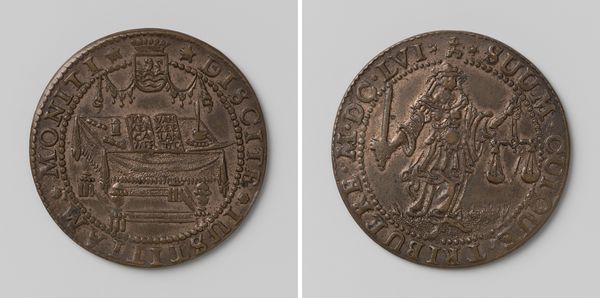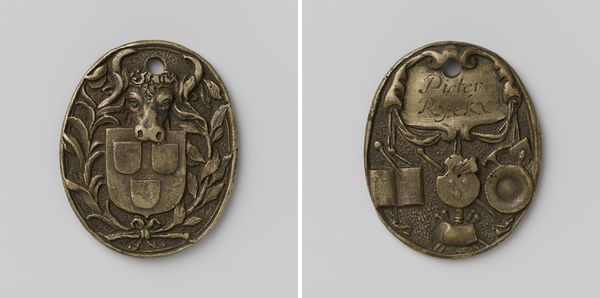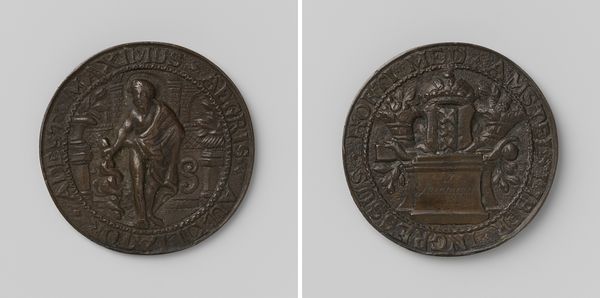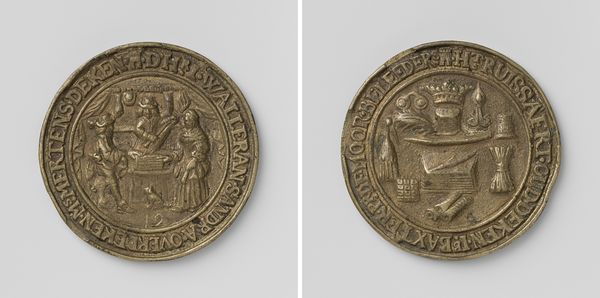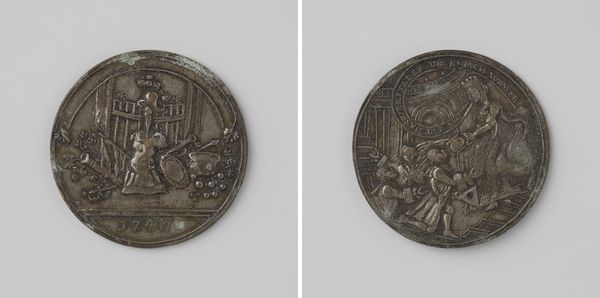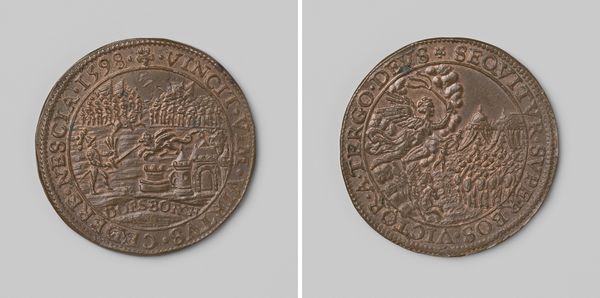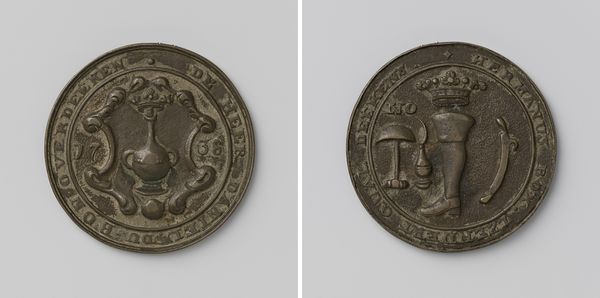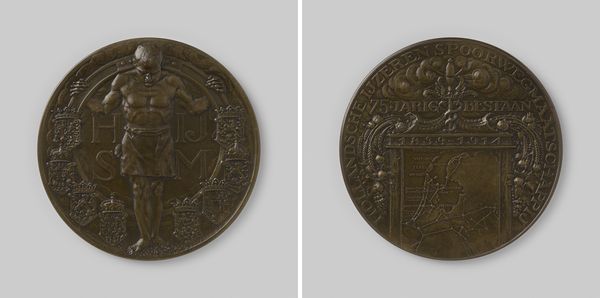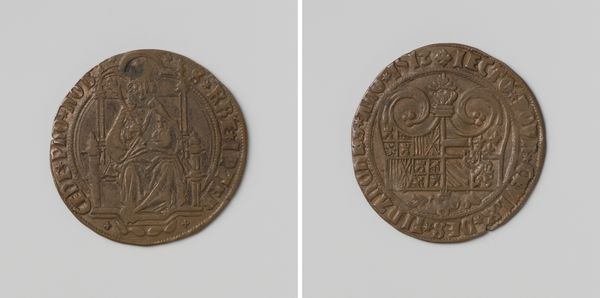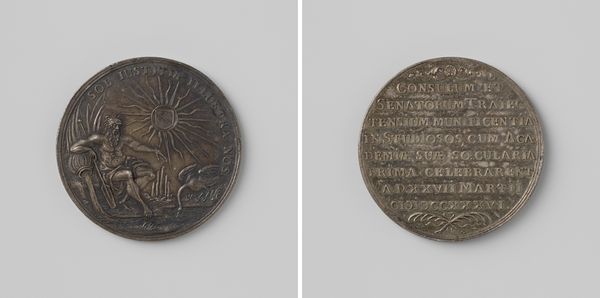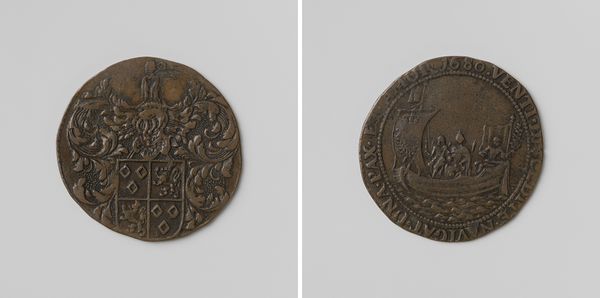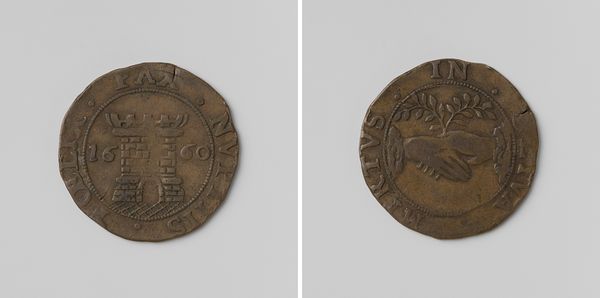
Wollenlakenkopers- en -snijdersgilde van Middelburg, gildepenning met no. 11 1595
0:00
0:00
relief, bronze, sculpture
#
medieval
#
sculpture
#
relief
#
bronze
#
sculpture
Dimensions: diameter 4 cm, weight 19.10 gr
Copyright: Rijks Museum: Open Domain
This bronze gildepenning, or guild token, was created by Francois Baillet, around the year 1600. The eye is immediately drawn to the dense arrangement of figures on one side. Three figures are positioned around a table, their forms deeply etched against a backdrop of vertical lines and a gridded floor. The composition is dense, with little negative space, creating an intimate, almost claustrophobic feel. The token's imagery, though small, speaks volumes about the social structure and economic activities of the time. The figures are not merely representations of individuals, but rather, they are signs that point to the broader guild system and its role in regulating trade and commerce. The act of "buying and cutting woolen cloth" can be read as a performance of regulated labour, which reflects a society deeply structured by class, labour, and economic exchange. Consider how the artist’s choice of bronze as a medium lends a sense of permanence and authority to the token. This materiality, combined with the dense, relief-like carving, transforms the token into more than just a marker of guild membership, but a symbol of economic power, social order and artistic expression.
Comments
No comments
Be the first to comment and join the conversation on the ultimate creative platform.
